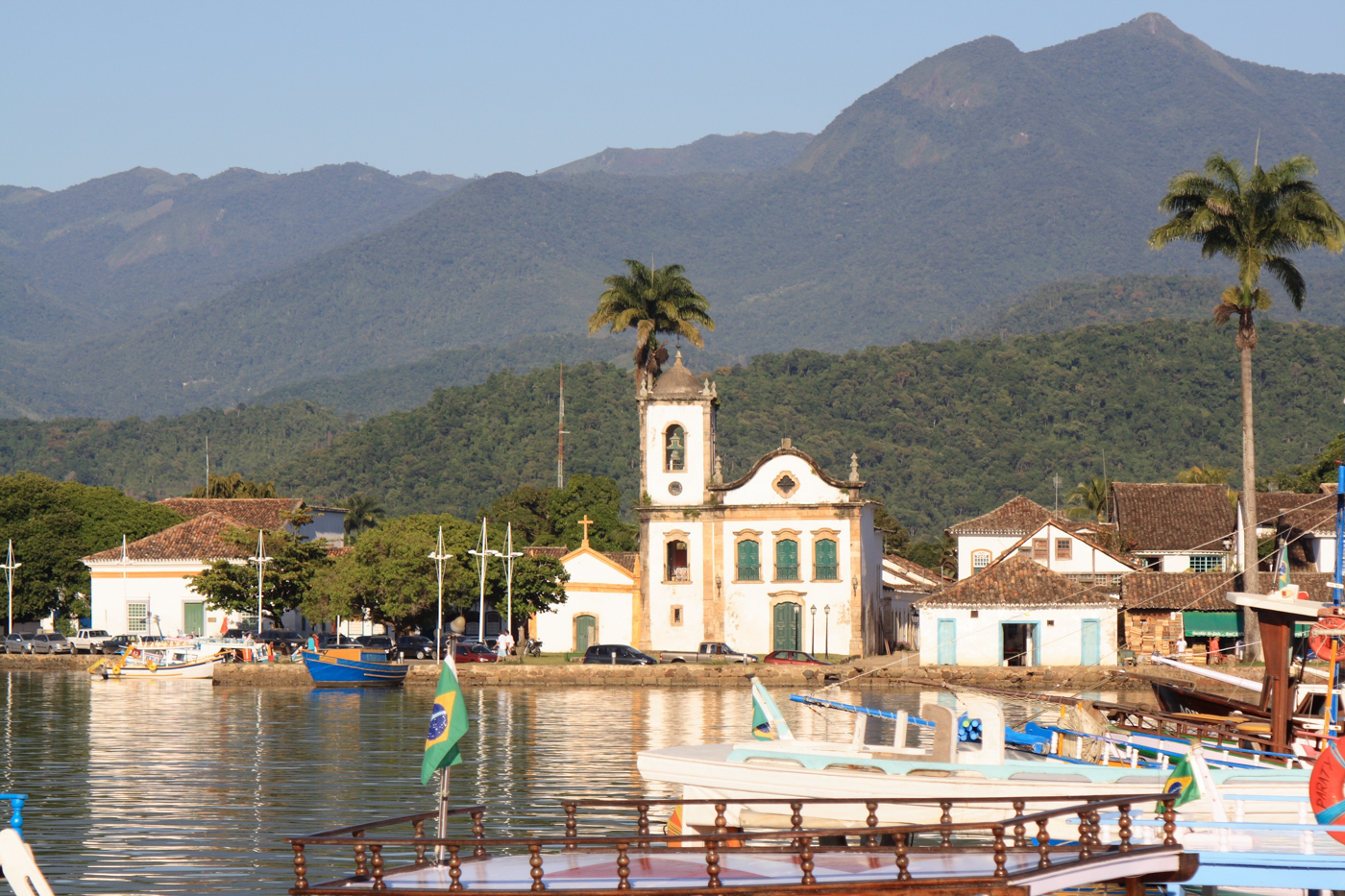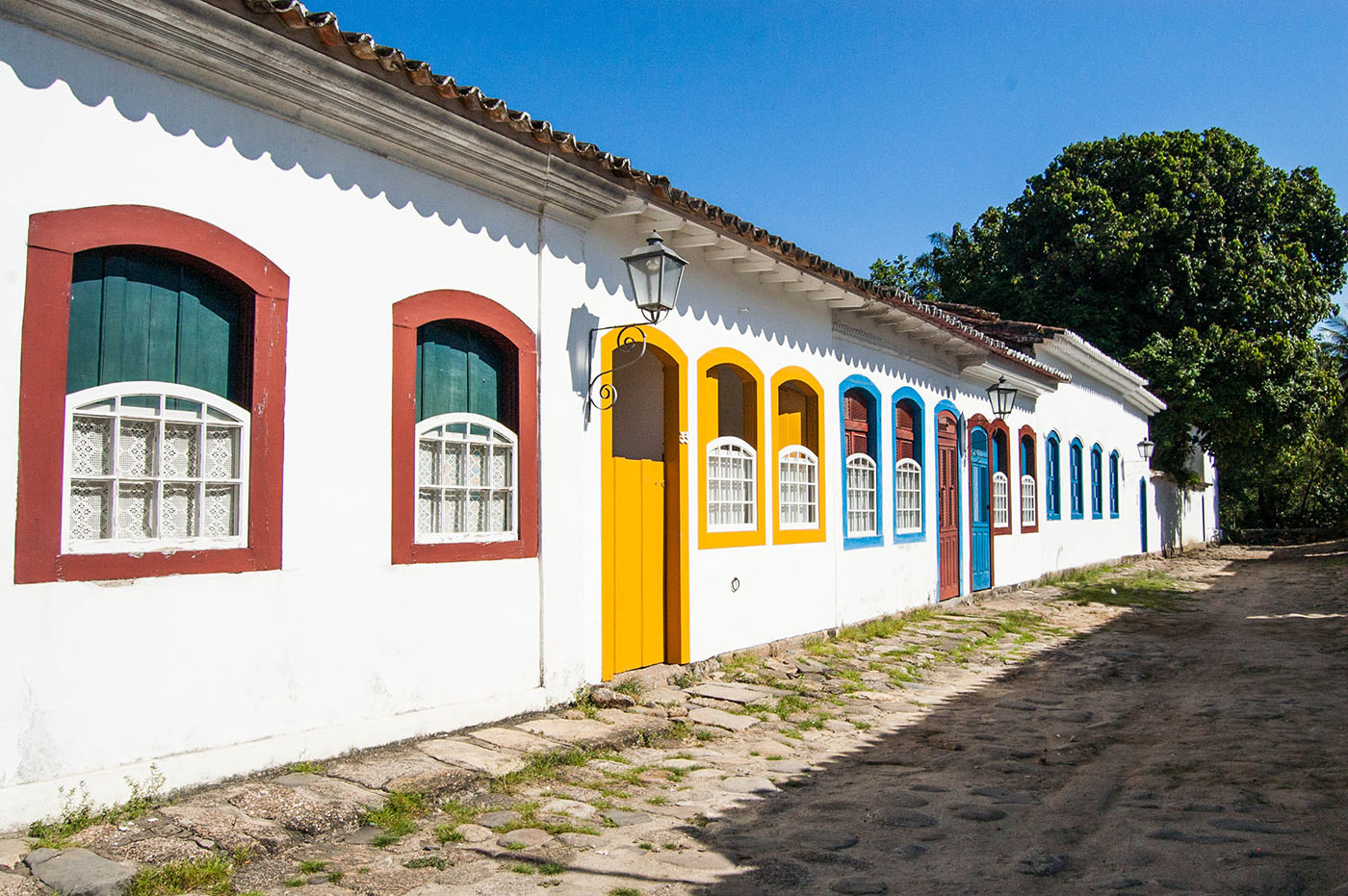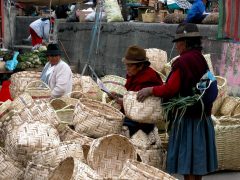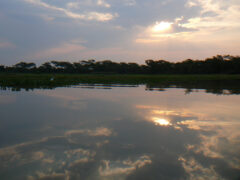
Paraty is a wonderful town four hours south of Rio de Janeiro. A popular tourist spot for those looking for something more than the usual beaches found along the Costa Verde or Emerald Coast.
Backed by verdant jungle-clad mountains and facing a bay with 365 islands the setting couldn’t be more idyllic. But there is much more to this town than the coast: it is one of Brazil’s oldest towns and was once one of the most important ports in the Portuguese empire. The town has been through various economic cycles, historians have identified five that have dominated the ups and downs of the town.
From riches to ruin
Originally settled by the local Guaianás indians who gave the town its name, Paraty means River of Fish in the Tupi language. The Portuguese ‘founded’ the town in 1597 but it wasn’t until 99 years later that the town began to flourish. This was due to the discovery of gold in the state of Minas Gerais over 700 kilometres away. At the time it was the world’s richest mine, much of the town’s buildings and streets are made using Portuguese stone used as ship ballast which would then return to Europe filled with gold, so much that it caused inflation in Europe as the economies couldn’t cope with the influx. The gold was taken overland to the port at Paraty where it would go onward to Rio and then to Portugal. This eventually lead to the founding of the Rota do Ouro or Gold Route made up of routes used by the indigenous communities when heading to the mountains during the summer.

The journey itself would take three months from the mines of Minas Gerais to the port, bandits along the route would take a large chunk of the gold and then there was the threat of pirates based on one of the many islands in the bay. Eventually this threat proved too much for the Portuguese who found a safer route directly from the mines to Rio causing the end of the first economic cycle and plunging the town into ruin.
The remaining inhabitants looked elsewhere for business and the answer came in the increasing demand for sugar in Europe. The climate was perfect to produce the sugar cane which was then exported to Portugal and onwards across Europe. With both sugar and coffee came slavery, of which Paraty once again became a major port, over 1 million would go through the port until the practice was abolished in 1888.
Coffee and cachaça
The sugar cane also caused another of Brazil’s famous exports, cachaça, the staple alcohol which forms the base of Brazil’s most famous cocktail, the caipirinha. There was to be over 250 distilleries in the area at the apogee of its production. Over time, sugar became easier to obtain and Paraty’s distance to Europe led to a shrinking of fortunes (although cachaça remained as popular as ever – as sugar cane production spread to different areas so did the production of cachaça) so the people of the area looked for an alternative which came in the guise of coffee.
Coffee became the region’s major industry with exports mainly being sent to Europe, once again the port was flourishing and the town was becoming rich. New buildings were erected, grand churches were commissioned and with Rio becoming the seat of the Portuguese empire in 1808 the town’s fortunes increased further. This was to last for almost a century until the introduction of the railway, which caused the town to collapse as it meant a direct route could be established between the major cities of Rio and São Paulo, bypassing Paraty and meaning there was no longer a need for the port.

By 1950 the population would shrink to just 800, 5% of the total from 1880. However the final economic cycle was about to begin and one that is still causing the town to flourish to this day: tourism. In 1966 the famous Route 101 which winds its way along the coast of Brazil from the south near the border with Uruguay to the north near the city of Natal, a distance of over 4,600 kilometres. This route connected Paraty to the rest of Brazil for the first time since the gold route in the 17th century and meant that people could now flock to see the town’s preserved colonial heritage and relax on one of its many islands.
So if you’re looking for something a bit different when in Brazil, head a few hours along the coast from Rio and you will step back in time to a town of cobbled streets, horse-drawn carriages and beautiful buildings and if you want to spend some time on the beach, you have enough islands for every day of the year!
Tailor-made holidays
Flexible, custom-made holidays to Latin America created to match your exact requirements: our tailor-made itineraries are as unique as the clients for whom they are designed.
Design my tripPapagaio
Your edit for Latin American inspiration
Our exciting range of articles on Latin America explore everything from iconic destinations and lesser-known cultural gems to delicious traditional recipes. You’ll also find exclusive travel tips, first-hand client reviews and the chance to get your personal questions answered by our travel experts.
View Extraordinary Inspiration






































